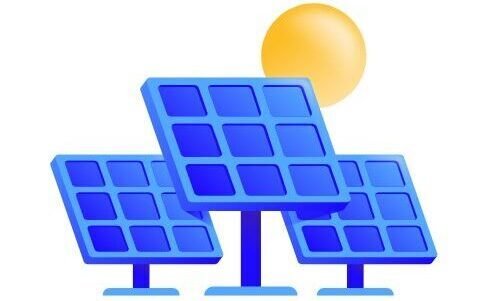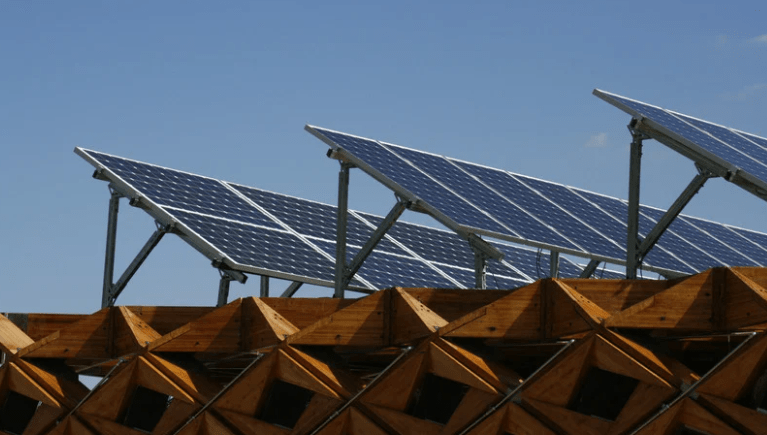Introduction
The world is rapidly transitioning to renewable energy, with solar power leading the charge. As the adoption of solar panels skyrockets, a hidden issue emerges—what happens to aging or damaged solar panels? Disposing of or recycling solar panels poses environmental and logistical challenges. Enter blockchain technology, a powerful tool poised to revolutionize how solar panel recycling is tracked, managed, and optimized.
This article explores how blockchain-led systems are driving innovation in the recycling of photovoltaic (PV) panels, making the renewable energy cycle more sustainable, transparent, and efficient.
The Growing Solar Waste Problem
The Flip Side of Solar Energy Growth
The solar industry has experienced exponential growth over the last decade. As countries commit to carbon neutrality, installations of photovoltaic (PV) systems are projected to triple by 2030. While this growth is essential for sustainability, it carries a hidden cost: solar panel waste.
Most solar panels have a lifespan of 25 to 30 years. With early adopters now facing panel obsolescence, we’re at the cusp of a solar waste crisis. The International Renewable Energy Agency (IRENA) estimates that by 2050, solar waste could reach up to 78 million tonnes globally.
Why Solar Panels Are Hard to Recycle
Solar panels are made from a complex mix of materials, including silicon, glass, plastics, and rare metals like cadmium and tellurium. These components are tightly bound, making disassembly and material recovery both costly and technologically demanding.
Compounding the issue is poor traceability—many recycling facilities don’t know what materials they’re receiving, leading to inefficiencies or improper disposal.
Enter Blockchain: A Transparent Digital Ledger
What Is Blockchain?
At its core, blockchain is a decentralized, immutable digital ledger. Information is stored across multiple nodes, making it tamper-proof and transparent. Originally developed for cryptocurrency, blockchain is now being applied across sectors like finance, healthcare, and—more recently—renewable energy and waste management.
How Blockchain Solves Recycling Challenges
Blockchain brings much-needed visibility into the lifecycle of solar panels. From manufacturing to disposal, every event can be recorded as a digital transaction, providing a secure, transparent trail that can’t be altered retroactively.
Here’s how it helps:
- Traceability: Each panel’s materials, manufacturer, batch number, and maintenance records are logged.
- Verification: Panels can be certified for recycling through smart contracts.
- Incentivization: Tokenized reward systems can encourage users to recycle responsibly.
- Accountability: Stakeholders are held accountable for proper recycling or disposal.
Lifecycle Tracking of Solar Panels with Blockchain
Digital Birth Certificates for Panels
Each solar panel can be issued a digital identity, sometimes referred to as a “birth certificate,” at the point of manufacturing. This digital asset would contain:
- Material composition
- Manufacturer data
- Date of manufacture
- Warranty information
- Expected lifespan
This certificate follows the panel throughout its lifecycle—during installation, operation, maintenance, and eventual end-of-life.
Maintenance and Usage Data
Smart sensors installed with panels can feed performance data into the blockchain. If a panel underperforms or gets damaged, this data is instantly recorded and accessible. By the time the panel is ready for recycling, recyclers already know what’s inside and what condition it’s in.
Streamlining the Recycling Process
Instead of relying on disjointed databases or paperwork, recyclers can simply scan a QR code linked to a panel’s blockchain record. They immediately access:
- Hazardous material alerts
- Disassembly instructions
- Recycling certifications
This reduces processing time, minimizes labor, and increases material recovery efficiency.
Smart Contracts in Action
Automating Incentives and Regulations
Smart contracts—self-executing codes on the blockchain—can be programmed to enforce recycling mandates. For instance, a smart contract could:
- Trigger a deposit refund once a panel is returned for recycling.
- Notify regulators if recycling targets aren’t met.
- Award blockchain tokens to individuals or companies that recycle panels responsibly.
These contracts eliminate bureaucracy while automating compliance.
Circular Economy Enablement
Blockchain allows manufacturers to track and retrieve materials, enabling a closed-loop supply chain. This supports a circular economy, where resources are reused instead of discarded.
For example, a company may recover rare metals like indium or tellurium from old panels and use them to build new ones—reducing dependency on mining and lowering production costs.
Case Studies and Pilot Projects
Energy Web Foundation
The Energy Web Foundation (EWF) has been pioneering blockchain applications in the energy sector. While not exclusively focused on solar recycling, their open-source blockchain platform has been adapted by recyclers to track panel lifecycles and improve asset traceability.
PV Cycle and Blockchain Integration
PV Cycle, a European non-profit, manages solar panel recycling across the EU. They’ve started exploring blockchain systems to digitize recycling chains and create verifiable reports for compliance and ESG (Environmental, Social, Governance) auditing.
SunContract (Slovenia)
SunContract, a blockchain-based energy trading platform in Slovenia, has hinted at integrating solar recycling incentives into its ecosystem. By tokenizing recycling behaviors, they aim to drive responsible end-of-life panel management.
Environmental and Economic Impacts
Reducing Toxic Waste
With blockchain improving traceability, toxic materials like lead or cadmium can be identified and safely extracted. This prevents contamination of soil and water sources and aligns with UN Sustainable Development Goals.
Job Creation and Industry Growth
Blockchain opens new business models—certified recycling brokers, digital verification agents, and data monetization startups. As solar installations grow, so will demand for qualified recyclers, blockchain developers, and sustainability auditors.
Attracting Green Investors
Verified blockchain data can be used to prove ESG compliance, attracting eco-conscious investors and boosting stakeholder confidence.
Challenges and Considerations
Technology Integration Barriers
Adopting blockchain on a wide scale requires cooperation across manufacturers, governments, recyclers, and users. Many of these entities lack technical infrastructure or the digital literacy to implement blockchain effectively.
Regulatory Uncertainty
In several regions, regulatory frameworks for both blockchain and solar recycling remain unclear. Without government support, adoption may stall despite technological readiness.
Energy Use of Blockchain
Ironically, some blockchain systems consume high energy. Choosing sustainable blockchain protocols (e.g., Proof-of-Stake instead of Proof-of-Work) is crucial to align with the mission of clean energy.
The Future Outlook: A Blockchain-Recycling Ecosystem
The synergy between blockchain and solar panel recycling offers a blueprint for transparent, efficient, and circular solar energy systems. As recycling technologies advance and blockchain becomes more accessible, we’re likely to see:
- National registries for solar panels built on blockchain
- Legally enforced digital documentation for recycling
- Cross-border recycling networks with blockchain verifiability
- Gamified apps rewarding users for recycling behaviors
Blockchain won’t solve the solar waste problem alone, but it’s a powerful enabler in the broader push for sustainability.
Conclusion
Blockchain-led solar panel recycling isn’t just a futuristic concept—it’s a necessary evolution in sustainable energy management. By improving traceability, automating compliance, and incentivizing responsible behavior, blockchain is poised to transform solar panel disposal from a liability into an asset.
As we move toward a greener world, leveraging blockchain for solar recycling isn’t just an option—it’s an imperative.

